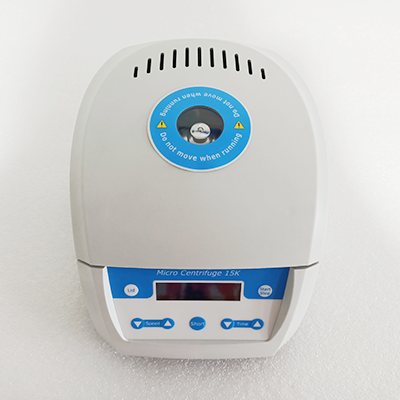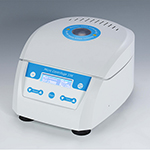Micro centrifuge machine, high speed 15000rpm
The KT-MC15K is the first and only compact micro centrifuge capable of achieving critical thresholds up to 15080 xg. For RNA/DNA sample extraction, sedimentation of biological components, biochemical and chemical analysis of trace samples. Its brushless, maintenance-free drive system makes it powerful, yet compact enough to fit every workstation with a personal centrifuge.
The KT-MC15K defines a new class of microcentrifuges: compact, fast, powerful and affordable. All aspects of microcentrifuge performance are considered without compromise. In addition to unparalleled speed (capable of achieving centrifugal speeds up to 15,000 rpm). The KT-MC15K also offers shorter acceleration/deceleration times, low noise operation, and its computer-designed airflow pattern minimizes sample temperature rise during extended high-speed runs.
- Model: KT-MC15K
- Capacity: 12*1.5/2.0ml centrifuge tubes
- Speed range: 500~15000rpm
- RCF range: 16~15080g
- Timing range: 15sec~99min59sec/∞
- Acceleration: 14sec(0~15000rpm)
- Deceleration: 14sec(15000~1000rpm)
- Rotor imbalance diagnostic: Yes
- Motor overheating protection function: Yes
- Power: 120W
- Voltage: DC24V/5A
- Dimension(mm): 255*194*140mm
- Net Weight: 2.3kg
Feature of micro centrifuge
All operating parameters are set using a conveniently located control knob. The large, bright LCD provides a clear indication of time and rpm or g-force. A separate momentary rotary button allows instant deceleration without having to set or interfere with any preset parameters. The rotor accepts 1.5 to 2.0ml tubes directly, as well as 0.5ml and 0.2ml tubes with optional adapters. For applications requiring sub-ambient temperatures, the KT-MC15K is freezer safe.









